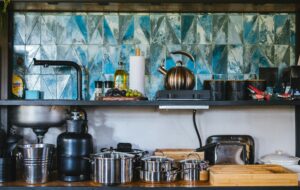Craft a Signature Kitchen for Five-Star Home Cooking


Great kitchens start with honest habits. Think about the meals you love to make and the pace you keep. If you sear steaks one night and simmer stew the next, you need space to pivot. If you bake for friends every weekend, you need clear counters and reliable heat. Picture a normal dinner from prep to plate. The map you draw in your head becomes the plan for your room.
Write your must-have list in plain terms. Do you want a quiet corner for coffee? Do you need a deep sink for stock pots? Keep the list short and real. You can refine it as you go, but it anchors every choice. When a light or a faucet tempts you, ask whether it serves those needs. Let function lead, and style will follow with ease.
Shape the Space for Flow
A five-star kitchen moves like a good song. The rhythm comes from a clear path between prep, cook, and clean. You do not need a huge room to get that feel. You need the right shape. Galley kitchens keep you focused. L-shapes open to guests. U-shapes hug you with reach. Islands help if they solve a problem, not just fill a gap.
Mind the clearances. Walkways should feel free of elbows and corners. Doors should not collide with each other or with people. Open the fridge and check whether a helper can pass behind you. Pull a pan and see if you can set it down without a shuffle. Small wins add up. When the path feels simple, you cook with calm. That’s what turns a home kitchen into a pro-level space.
Zones That Keep You Moving
Divide the room into simple zones. A prep zone holds knives, boards, bowls, and the sink. A cook zone lives near the range and keeps oils, salts, spoons, and pans at hand. A plate-up zone bridges the heat and the table. Each zone has its own tools, so you don’t cross the room for a peeler or a ladle. When you click zones, you move less and focus more.
Place your most used items where your hands fall. Mount a tool rail near the range. Tuck the cutting boards upright by the sink. Keep sheet pans in a slot near the oven. Treat every reach like a tiny test. If you fail once, fix it. You build speed and safety this way. You also keep counters clear, which makes every step faster and more fun.
Light That Lifts Every Dish
Light shapes flavor before you take a bite. Give yourself three layers. Wash the room with soft ceiling light so you never cook in a cave. Aim task lights at your counters so your knife work stays precise. Add a warm glow for the mood near seating. You will sense doneness better, plate more cleanly, and enjoy the room after the burners sleep.
Mind shadows. A pretty pendant means little if your hands block the beam. Under-cabinet strips shine straight onto the board. A small lamp on a shelf makes late-night tea feel special. Dimmer switches stretch the same fixtures across the day. Brighter for prep, softer for dinner, and lowest for a midnight snack. Good light is a tool. Treat it like one.
Surfaces Built for Work
Your counters are the stage. They must withstand heat, scraping, and splashing. Choose a main surface you won’t baby. Many materials can thrive if you respect them. Dense stone keeps pastry cool. Hard composites shrug off busy weeks. Wood sections provide warmth and a secure grip for chopping. Mix with intent. Put the rugged where the action is and set a showpiece where guests gather.
Backsplashes and floors earn their keep, too. A matte backsplash hides splatter and wipes clean. Grout lines can be tight and sealed, so scrub time stays short. Floors should forgive long days. A little give underfoot goes a long way when you stir and whisk for hours. Keep edges simple, joints tight, and corners sealed. Your future self will thank you after a winter of stews.
Storage That Saves Time
Storage turns chaos into calm. Think in layers, not piles. Drawers beat deep caves because you see everything at once. Add inserts that hold tools without rattling. Place spices in shallow pull-outs so labels face you. Give bulky items a home that does not require a shoulder press or a squat workout. When things slide, you use them more and clean up faster.
Keep daily goods within one step of where you use them. Bowls near prep. Oils near heat. Towels near the sink. Stash extras high or low, not center stage. Use vertical walls for rails and magnetic strips. Tuck a narrow pull-out by the range for oils and vinegars. Use a tall cabinet for brooms, a mop, and a step stool. Order is not decoration. It is speed.
